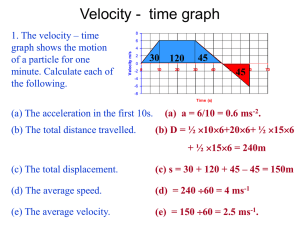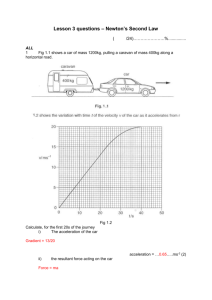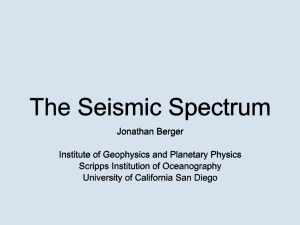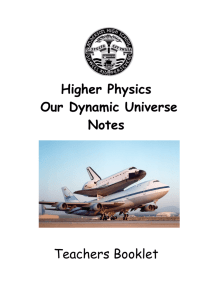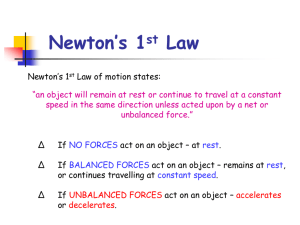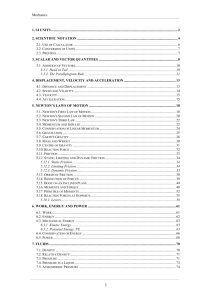File
advertisement
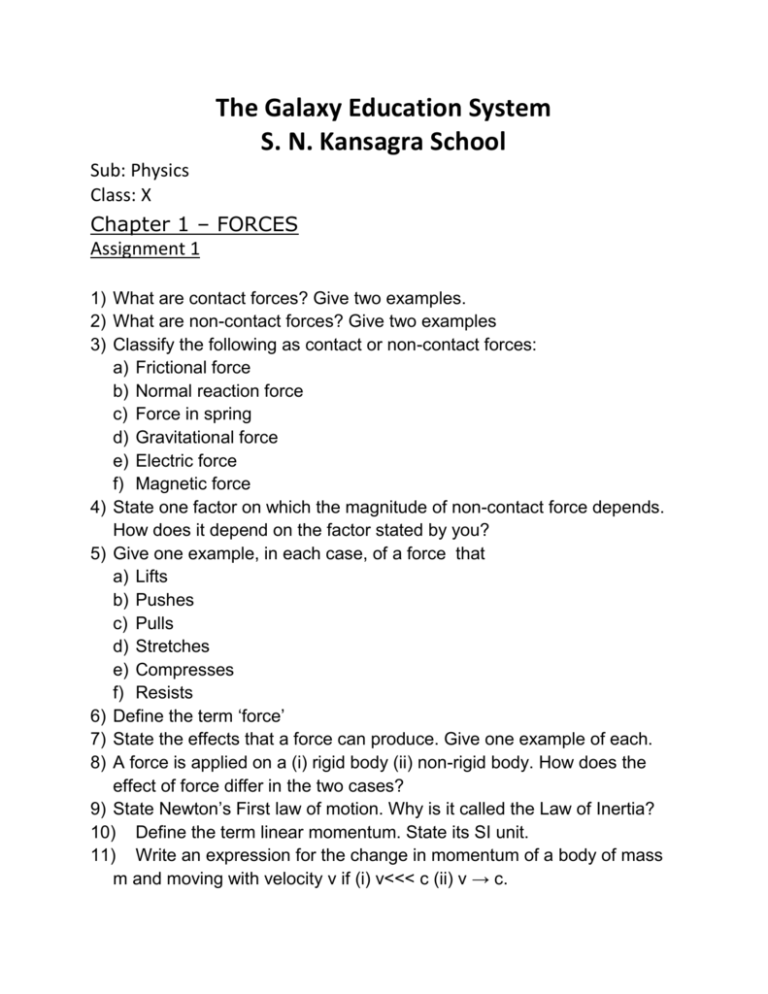
The Galaxy Education System S. N. Kansagra School Sub: Physics Class: X Chapter 1 – FORCES Assignment 1 1) What are contact forces? Give two examples. 2) What are non-contact forces? Give two examples 3) Classify the following as contact or non-contact forces: a) Frictional force b) Normal reaction force c) Force in spring d) Gravitational force e) Electric force f) Magnetic force 4) State one factor on which the magnitude of non-contact force depends. How does it depend on the factor stated by you? 5) Give one example, in each case, of a force that a) Lifts b) Pushes c) Pulls d) Stretches e) Compresses f) Resists 6) Define the term ‘force’ 7) State the effects that a force can produce. Give one example of each. 8) A force is applied on a (i) rigid body (ii) non-rigid body. How does the effect of force differ in the two cases? 9) State Newton’s First law of motion. Why is it called the Law of Inertia? 10) Define the term linear momentum. State its SI unit. 11) Write an expression for the change in momentum of a body of mass m and moving with velocity v if (i) v<<< c (ii) v → c. 12) State the condition when the change in the momentum of a body depends only on the change in its velocity. 13) State Newton’s second law of motion. Under what condition does it take the form F= ma. 14) Complete the following sentences: i) Mass X change in velocity=______________ X time interval. ii) The mass of a body remains constant till the velocity of the body_________________________. 15) Prove that F = ma. State the condition when it holds true. 16) Define (i) balanced forces (ii) unbalanced forces. 17) Name the SI unit of (i) linear momentum (ii) rate of change of momentum. 18) State the relationship between Force, mass and acceleration. Draw graphs showing the relationship between: a) Acceleration and force for a constant mass b) Acceleration and mass for a constant force. 19) A rocket is moving at a constant speed in space by burning fuel and ejecting out the burnt gases through a nozzle. Answer the following; a) Is there any change in the momentum of the rocket? If yes, what causes the change in the momentum? b) Is there any force acting on the rocket? 20) State Newton’s third law of motion. 21) Name the SI unit and CGS unit of force. How are they related? 22) Define 1 N, 1 dyne, 1 kgf and 1 gf. 23) Write down the gravitational unit of force. How is it related newton? 24) Explain what is understood by the – 1 kgf = 9.8 N 25) Complete the following; a) Force = mass X _____________ b) 1 N = __________ dyne c) 1 N = __________ kgf d) newton is the unit of ____________ e) 1 gf = ___________ dyne 26) Say true or false: a) 1 N = 9.8 kgf. b) If a body is moving with uniform velocity, then Net force acting on it is zero. c) If a body is accelerating, the Net force acting on it is zero. d) The weight of a body of mass 3 kg is 3 N. e) The mass of a body decreases as its velocity approaches the velocity of light. f) One dyne is a force which when acting on a body of mass 1 g produces an acceleration of 980 cms-2 27) A body of mass 1 kg is thrown vertically up with an initial speed of 5 ms-1. What is the magnitude and direction of force due to gravity acting on the body when it is at its highest point? Take g = 9.8 ms-2 [ 1 kg or 9.8 N vertically downwards] 28) A body of mass 1.5 kg is dropped from a height of 12 m. What is the force acting on it during its fall? Take g = 9.8 ms-2 [ 14.7 N] 29) Two balls of masses in the ratio 1:2 are dropped from the same height. Find: a) the ratio between their velocities when they strike the ground. b) the ratio of the forces acting on them during motion. [1: 1, 1: 2] 30)A body X of mass 5 kg is moving with a velocity of 20 ms-1 while another body Y of mass 20 kg is moving with a velocity of 5 ms-1. Compare the momentum of the two bodies. [1:1] 31) Calculate the acceleration produced in a body of mass 50 g when acted upon by a force of 20 N. [400 ms-2] 32) A car of mass 600 kg is moving with a velocity of 10 ms-1 while a scooter of mass 80 kg is moving with a velocity of 50 ms-1. Compare the momentum of the two vehicles. Which vehicle will require more force to stop it in the same time interval? [3:2, car] 33) A cricket ball of mass 100 g strikes the hand of a player with a velocity of 20 ms-1and is brought to rest in 0.01 s. Calculate: (i) the force applied by the hand of the player (ii) acceleration of the ball. [200 N, -2000 ms-2] 34) A lead bullet of mass 20 g, travelling with a velocity of 350 ms-1, comes to rest after penetrating 40 cm in a still target. Calculate: (i) the resistive force applied by the target (ii) retardation caused by it. [3062.5 N, 1.53 X 105 ms-2] 35) A body of mass 50 g is moving with a velocity of 10 ms-1. It is brought to rest by a resistive force of 10 N. Calculate: (i) the retardation (ii) the distance that the body will travel after the resistive force is applied. [200 ms-2, 25 cm] 36) A toy car of mass 500 g travels with a uniform velocity of 25 for 5 s. The brakes are then applied and the car is uniformly retarded and comes to rest in further 10 s. Calculate: (i) the retardation (ii) the distance that the body will travel after the brakes are applied (iii) the force exerted by the brakes. [2.5 ms-2, 125 m, 1.25 N] 37) A force of 10 kgf is applied on a body of mass 100 g initially at rest for 0.1 s. Calculate (i) momentum (ii) distance travelled by the body in 0.1 s. Take g= 9.8 ms-2. [10 kgms-1, 5 m]


